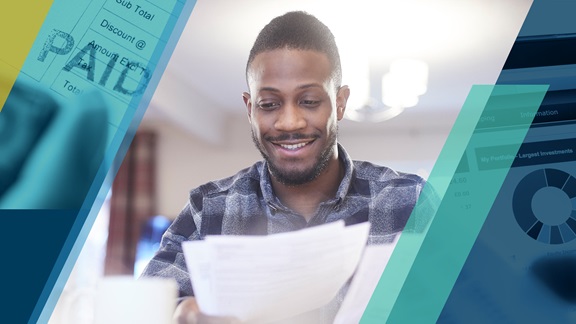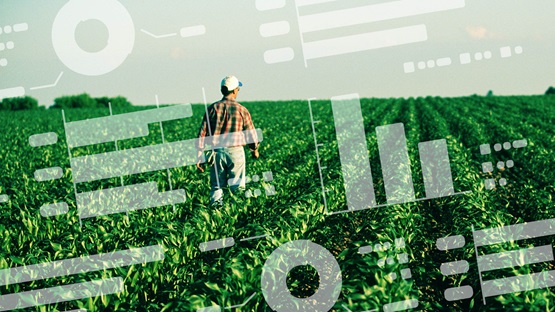Early in 2020, when the COVID-19 pandemic exacerbated an economy already headed for recession, many observers expected bankruptcy rates to rise.
Two years have passed and the opposite has happened. Bankruptcy filings have fallen in the Ninth District and throughout the country—not by a little but by a lot.
“January filings were the lowest since I was in kindergarten (in the 1980s)," said Matthew Tande, Twin Cities bankruptcy attorney with Prescott Pearson & Tande. “It’s been decades since it was that low.”
All types of bankruptcy filings have fallen, from consumers seeking to liquidate assets and start fresh (Chapter 7) to businesses and family farms seeking to reorganize debt (Chapters 11 and 12, respectively).
Bankruptcy attorneys and other observers point to three key factors that tend to affect filings: debt load, debtors’ ability to pay, and creditors’ ability to collect payments.
While debt load for both households and businesses grew during the pandemic, their ability to pay grew faster, thanks in part to federal stimulus checks, larger unemployment checks, and forgivable business loans. The government also temporarily stopped foreclosures on federally backed home loans and repayment of federal student loans.
But most of those pandemic relief measures expired in fall 2021 or earlier.
Instead of government checks, what could be helping debtors now is rising wages resulting from strong demand for workers, according to Rob Meadors, a bankruptcy attorney with Brende & Meadors in Sioux Falls, South Dakota. But that could end if the cost of living continues to rise faster than wage growth. “One can only guess when debtors will have to make a decision between paying for groceries or servicing debt,” he said.
Little pressure for consumers
When the pandemic began, the rate at which consumers filed for bankruptcy had been falling for nearly a decade since peaking in the aftermath of the Great Recession. Despite the pandemic and the recession, the filing rate in the last two years has fallen even faster among Ninth District states (not including Michigan’s Upper Peninsula) and the rest of the country (Chart 1).
Per capita consumer debt, a key factor in bankruptcies, grew but only by a percent in Ninth District states, according to surveys conducted by the New York Fed (Chart 2). Contrary to some predictions, credit card debt actually shrank despite the turmoil of a pandemic-fueled recession. Consumer debt grew mostly because home and auto loans grew, reflecting both the rising demand and cost of those goods.
Income, the lack of which is another key factor in bankruptcies, grew faster than debt. Between 2019 and third-quarter 2021, personal income per capita in Ninth District states grew by 8 percent, according to Bureau of Economic Analysis’ latest data.
Personal income consists of several components. Of these components, government benefits grew the most, more than making up for declining earnings during parts of 2020, the data show. Earnings, the component that comes from wages and from payments business owners pay themselves, soon rebounded, however, exceeding 2019 levels.
The timing of the government benefits may have been important in smoothing out cash flow for households, arriving as they did just as earnings were in decline. Within a week of the White House’s national emergency declaration in mid-March 2020, people began avoiding public places—even before some states instituted lockdowns—and unemployment claims soared. The following week, Congress approved a barrage of benefits, which served as powerful counterweights to the job losses. These included an extra $600 a week in unemployment benefits, stimulus payments upward of $1,200 for low- to middle-income families, forgivable loans for businesses as part of the Paycheck Protection Program (PPP), and direct government payments for farmers.
The government also blocked foreclosures for federally backed loans and paused repayment of federal student loans, which won’t end until May 2022. At the state level, Minnesota, Montana, North Dakota, and Wisconsin effectively halted evictions for periods ranging from a month to more than a year. Courts through which collection enforcement actions, such as wage garnishments, are approved were shut down in the early days of the pandemic.
Tande said all these government actions helped decrease bankruptcy filings. “Usually people go to us when wages get garnished and bank accounts get levied,” he said. “There wasn’t a whole lot of pressure to get people to file.”
This is not to say there has been little financial hardship during the pandemic. Bankruptcy filings are only one measure of hardship, and for consumers, it’s typically middle-class households who have the money to file.
Business earnings rise
The decline of business bankruptcies is a similar story to that of consumers: debt is up but so is income, and government benefits have played a key role.
Business debt data is not widely available at the state level, but national data from the Federal Reserve System shows that debts incurred by businesses not involved in lending jumped in the first half of 2020 and have trended downward since (Chart 3).
Most of the debt growth in the first quarter was from businesses drawing down lines of credit in anticipation of the pandemic’s economic impact, the Fed reported. In the second quarter, debt was driven mostly by corporate bonds as firms took advantage of low interest rates and by PPP loans. Under the PPP, the government facilitated $521 billion in low-interest bank loans, making up about a fifth of all bank loans to businesses. Businesses in Ninth District states borrowed $26.4 billion of that. The government allowed borrowers to defer payments for many months and, ultimately, forgave most of the loans, starting in late 2020.
The Fed noted the precautionary nature of much of the borrowing, with businesses amassing cash without necessarily spending it. Businesses started repaying credit lines later in 2020 as the economy rebounded. By second-quarter 2021, the Fed reported that most measures of business debt used to assess the vulnerability of the economy, such as the debt-to-GDP ratio, “have largely returned to pre-pandemic levels.”
Not only has business debt declined when adjusted for inflation, earnings have grown since the second quarter. State-level data on noncorporate business earnings, as measured by money that owners in sole-proprietor businesses and partnerships pay themselves, show that Ninth District states recovered a little faster on that front than the rest of the nation. Noncorporate earnings in the district in the last quarter of 2021 was 28 percent higher than pre-pandemic levels. Nationwide, that figure was 8 percent.
Ironically, among the businesses that have suffered more in the pandemic are law firms specializing in bankruptcies.
Tande said he had to furlough his workers for a week each month earlier in the pandemic as a way to avoid laying anyone off, which other bankruptcy law firms were forced to do. “We stayed in business but, boy, it’s been awfully rough.”
Farm bankruptcies are years in the making
Chapter 12 bankruptcies, a subset of business bankruptcies used by family farms, have also declined but haven’t followed the same trajectory (Chart 4). Instead of decreasing in 2020 like other business bankruptcies in the Ninth District, they spiked nearly 50 percent before dropping below pre-pandemic levels in 2021.
This likely had nothing to do with the pandemic but with difficult economic conditions years earlier, according to Nigel Key, an economist with the U.S. Department of Agriculture’s Economic Research Service. He’s one of the authors of a recent USDA study that linked the sharp increase in Chapter 12 bankruptcy filings in 2019 to a downturn in the farm economy in the mid-2010s. Average income for farms around the nation fell 10 percent in 2015 compared to the year before. In Ninth District states, farm income fell 15 percent. At the same time, rising farm debt made it harder for farmers to withstand the loss of income. “Bankruptcies appear to be a lagging indicator of financial stress,” the study said.
In that light, filings in 2020 appear to be a continuation of trends in 2019 with debt continuing to rise and income plateauing.
Like other businesses, farmers did receive help from the government in 2020; average farm income that year was the same as in 2015 but only because government payments had increased significantly, according to USDA data. Key said those payments wouldn’t have affected bankruptcy filing rates because of the lag effect his study found.
One reason farmers and ranchers are able to hang on for years after income falls is they can use the “large equity cushion” in their land to secure loans, Meadors said.
Why Chapter 12 filings fell so sharply in 2021 isn’t clear, but a pause on the collection of some debts probably helped. The USDA announced at the beginning of 2021 that it would suspend collection and foreclosure on loans it guarantees or has issued, which it said affected one in 10 borrowers nationwide. Late or nonpayment of farm loans has also declined, accompanied by a significant increase in prices received by farmers for commodities commonly produced in the Ninth District, such as corn; farm income data for 2021 wasn’t yet available.
Lagging indicator
In a way, all bankruptcy filings are lagging indicators of financial stress, though most have shorter timelines than farm bankruptcies. Filing for bankruptcy is simply the last thing most people want to do.
“Many wait until the bitter end, when their wages are being garnished and everything has fallen apart,” Meadors said. “A surprisingly high number of people seem to tolerate collection activity like wage garnishments, bank account levies, and other collection activity, when a simple bankruptcy filing could have saved them considerable money.”
Research has shown that many debtors feel an overwhelming sense of shame and would rather go without health care or food than consider bankruptcy.
Even those who are willing to file don’t always have the means to do so. Businesses, especially small ones, may delay filings because they lack the resources to access the court system and because of economic uncertainty. Consumers may lack the money to hire attorneys to help them file for bankruptcy. Attorneys say this is why consumer bankruptcy rates usually peak at tax season, when households receive tax refunds.
Tande said that filings at his firm really picked up in February, and he expects more filers as tax season arrives. “We’re coming into the busy part of the year.”
Tu-Uyen Tran is the senior writer in the Minneapolis Fed’s Public Affairs department. He specializes in deeply reported, data-driven articles. Before joining the Bank in 2018, Tu-Uyen was an editor and reporter in Fargo, Grand Forks, and Seattle.





